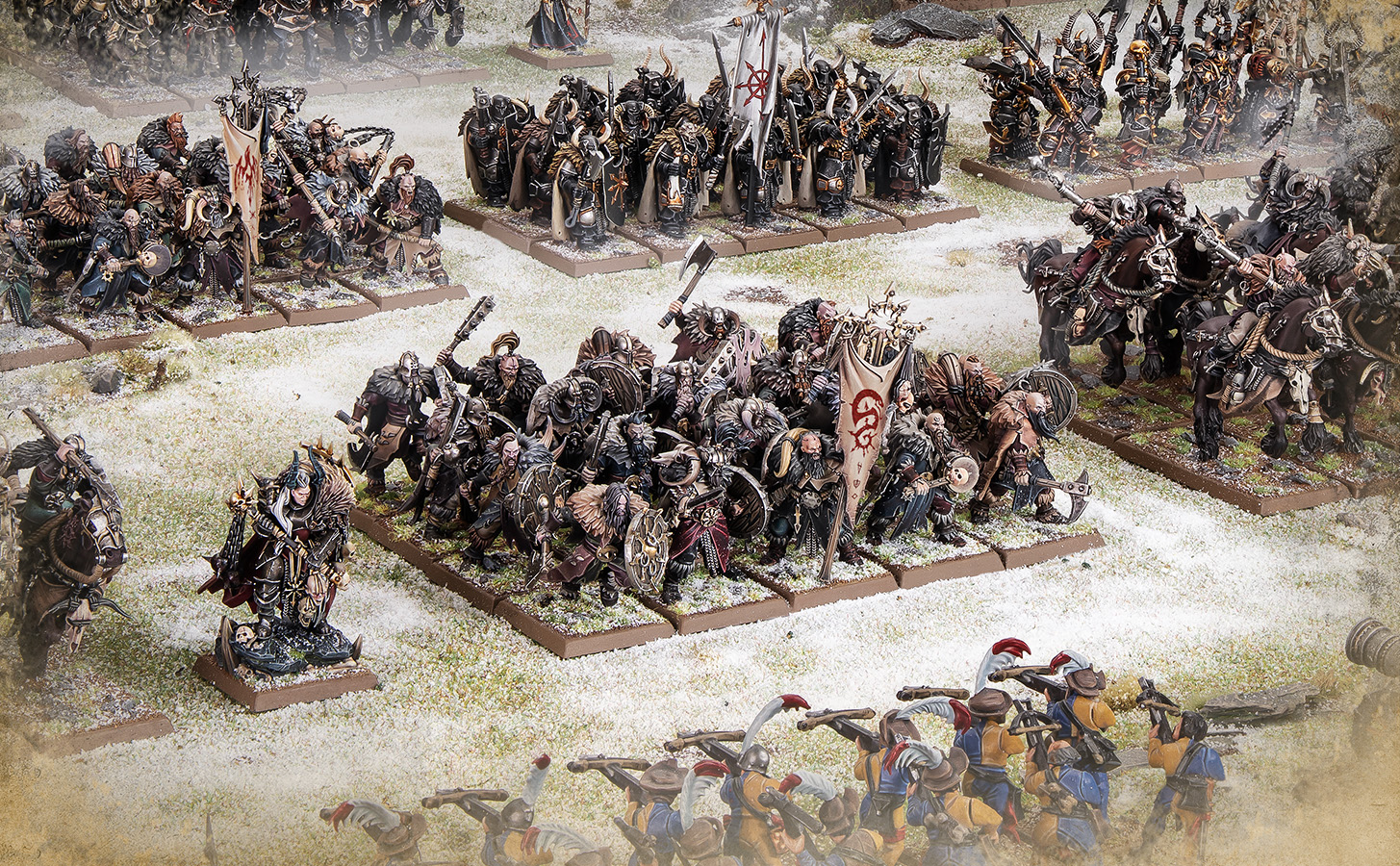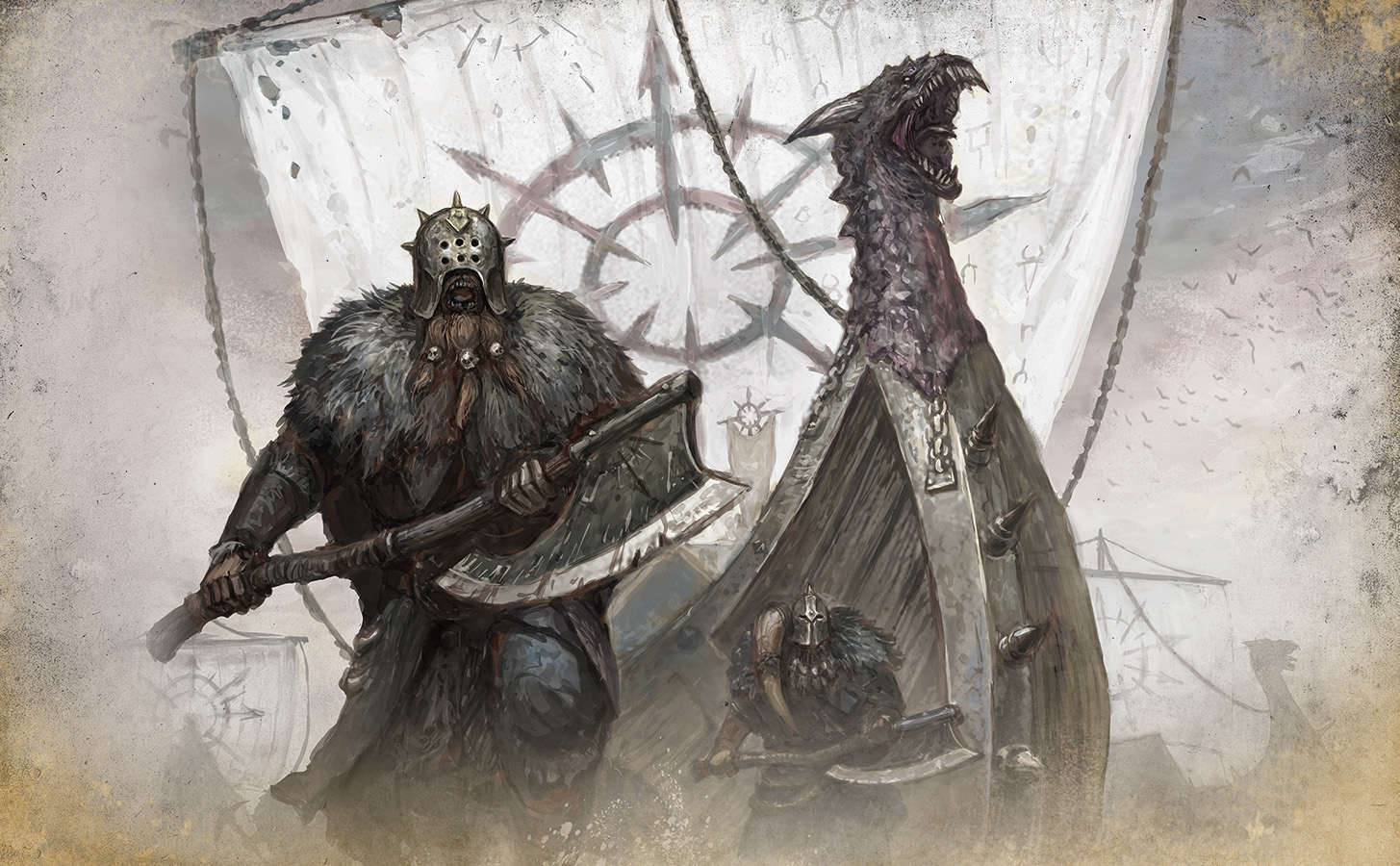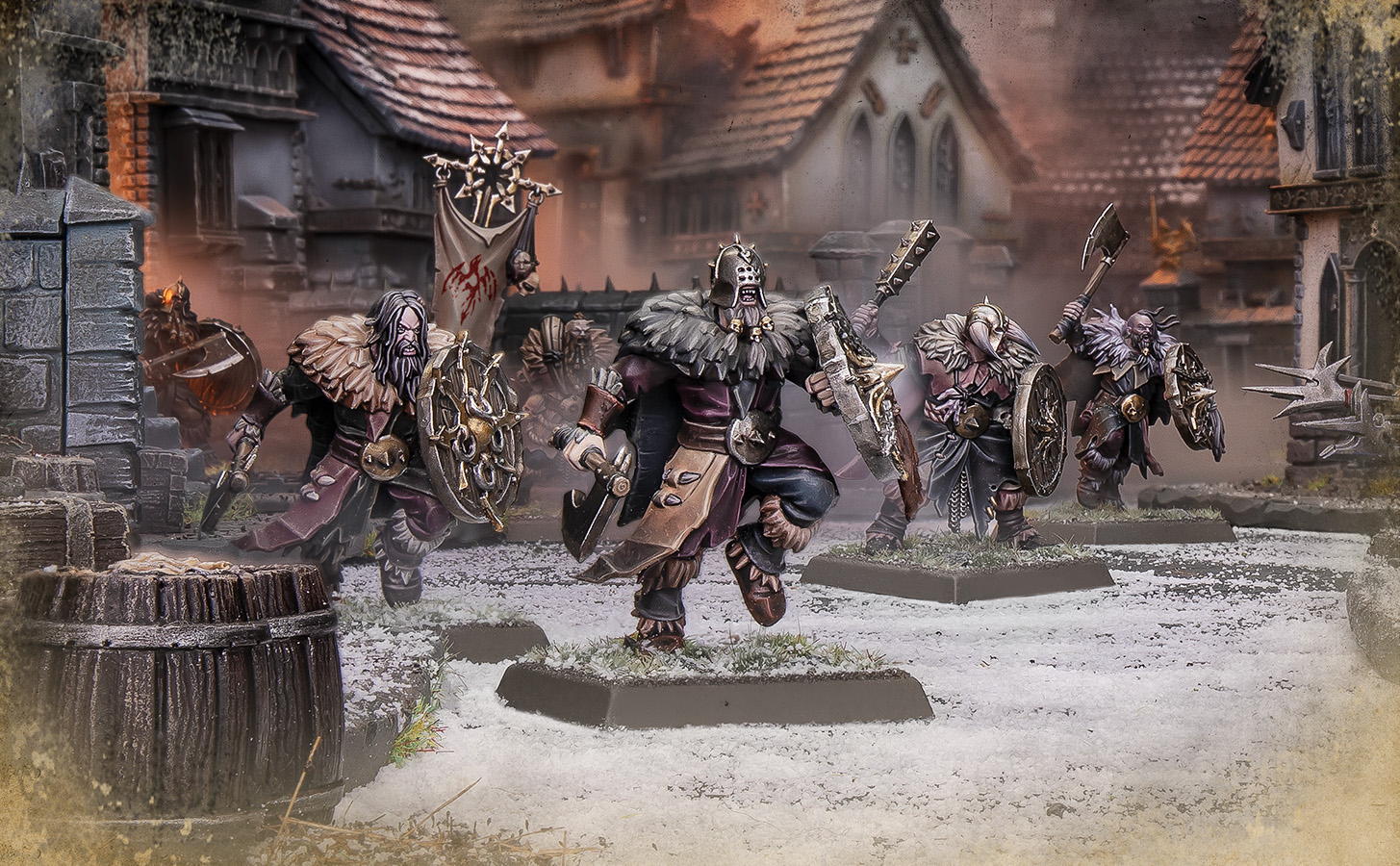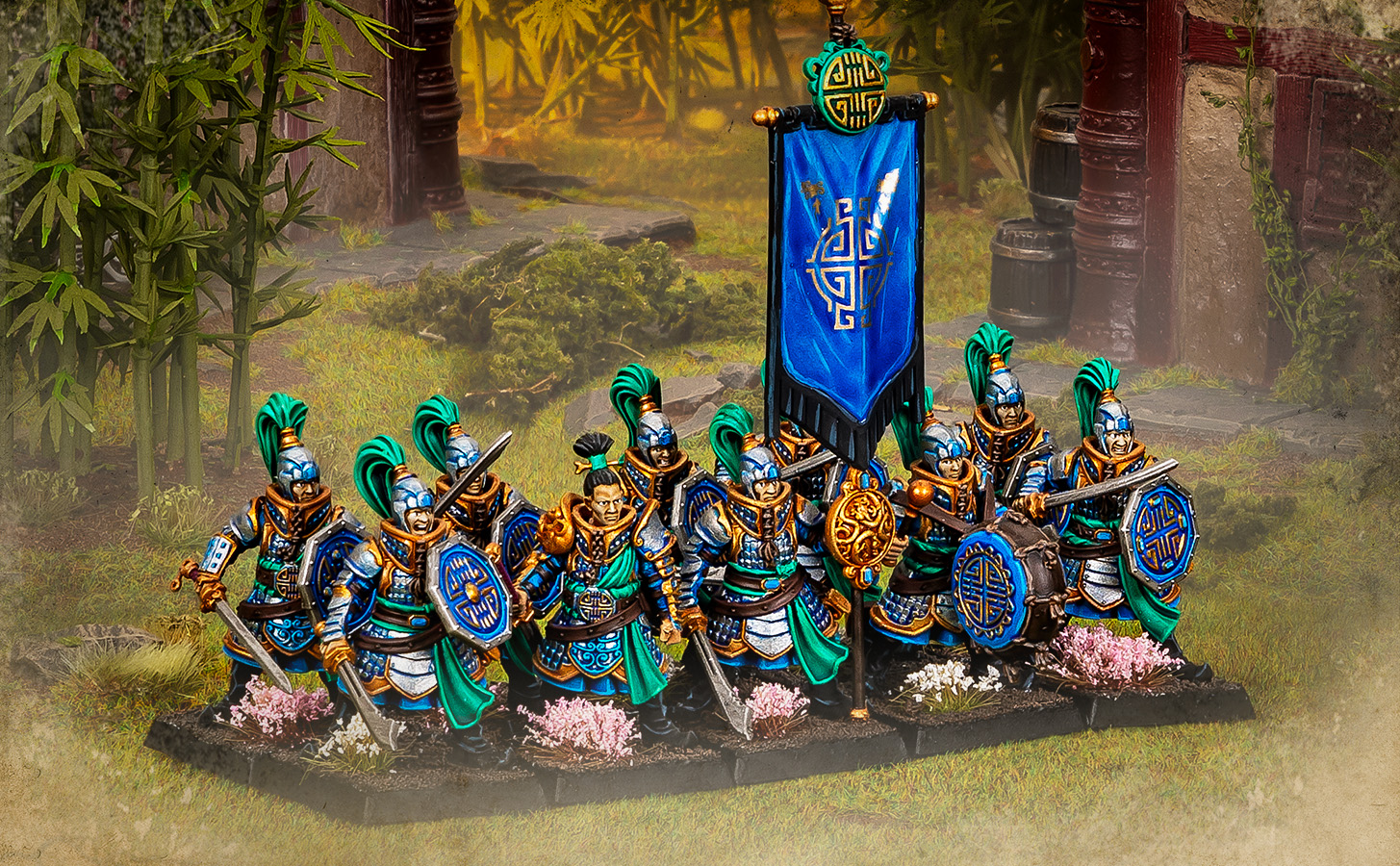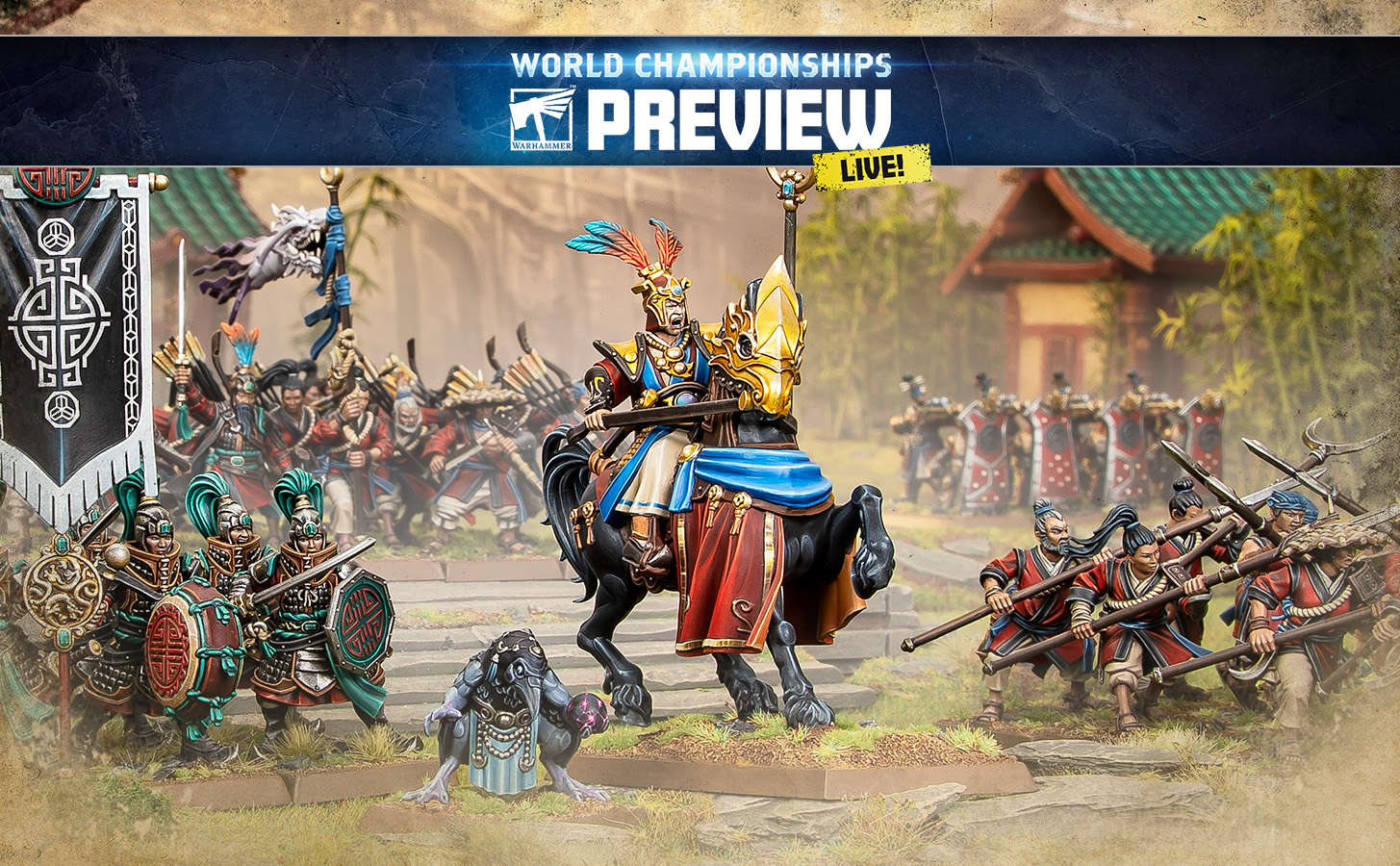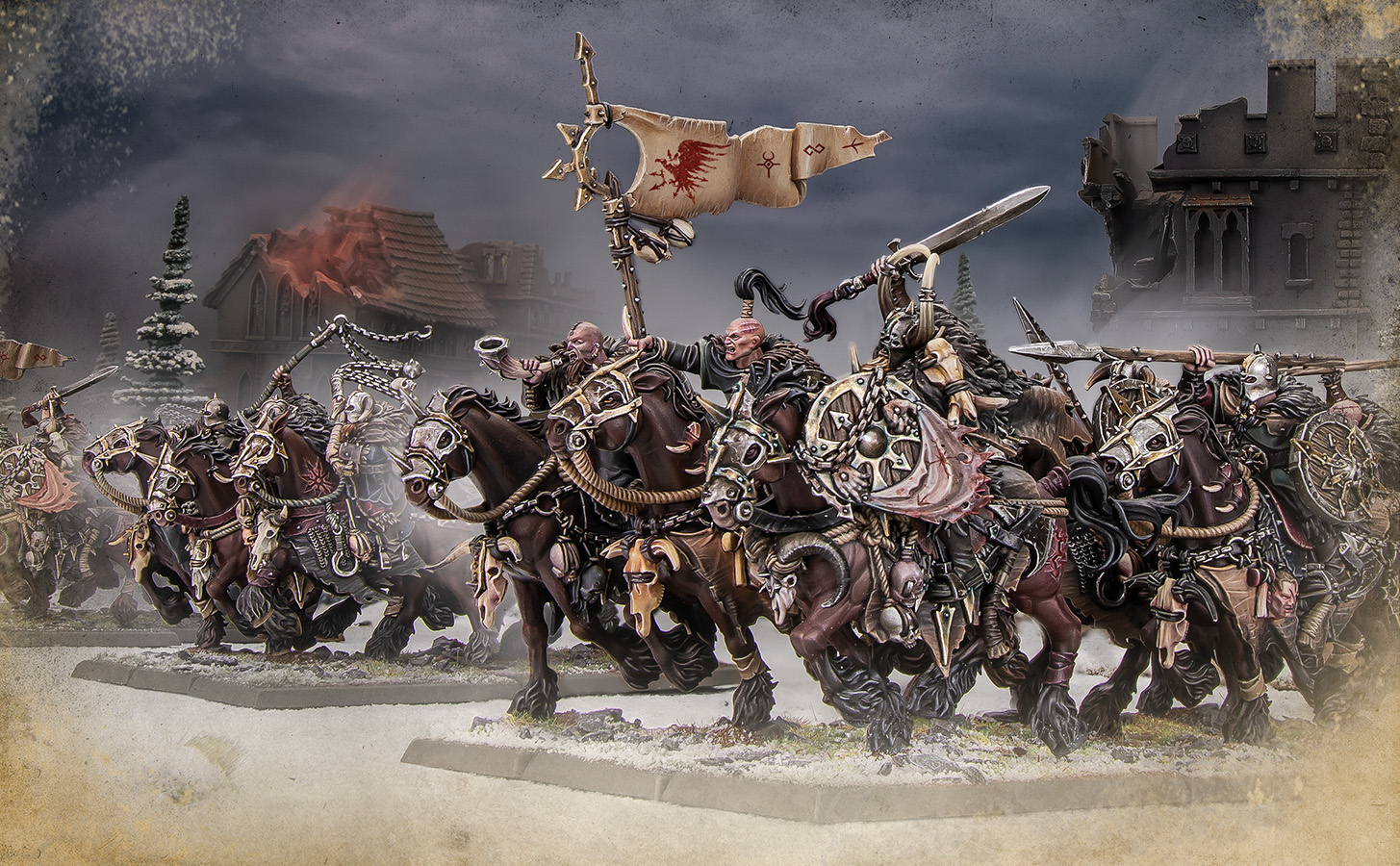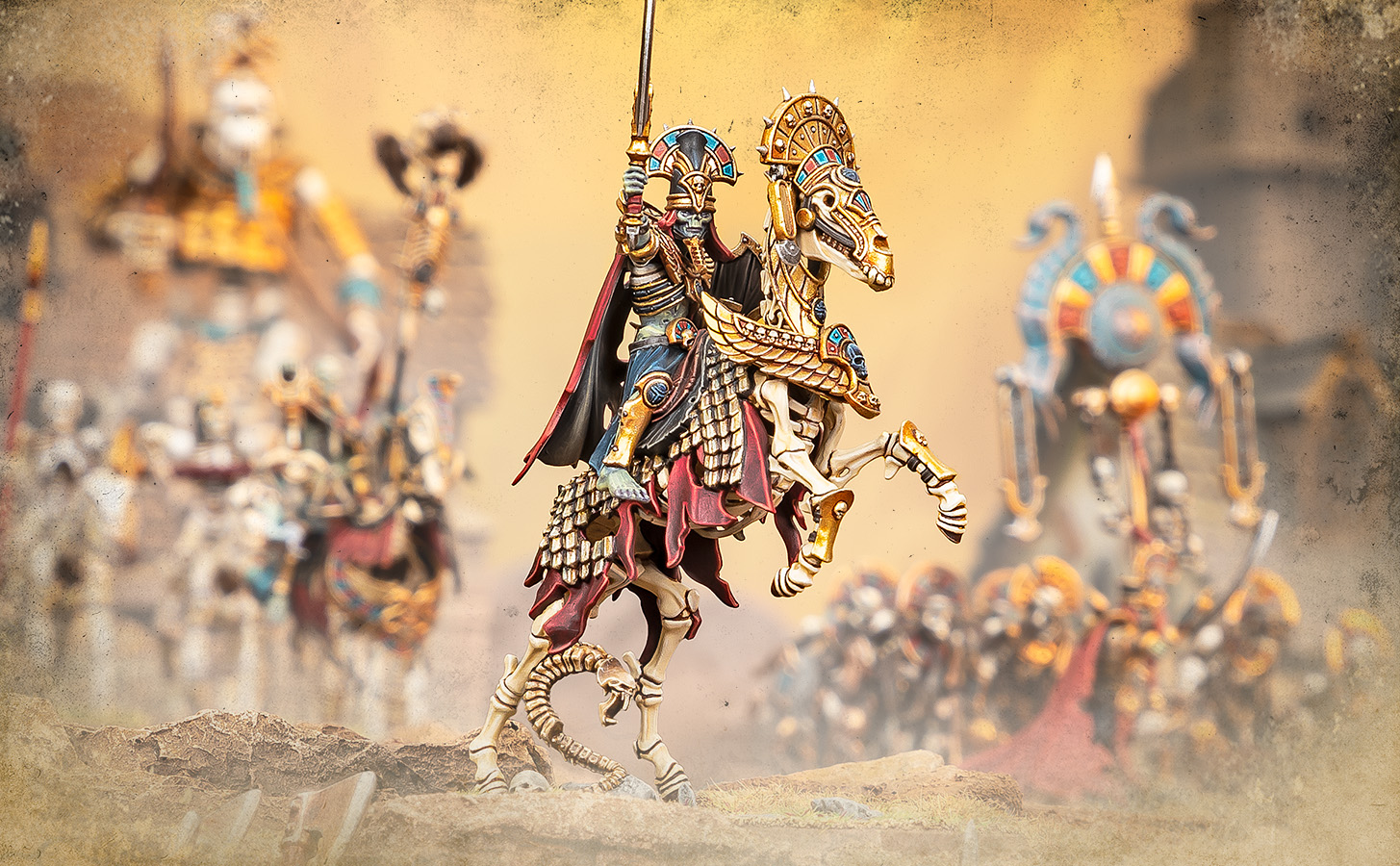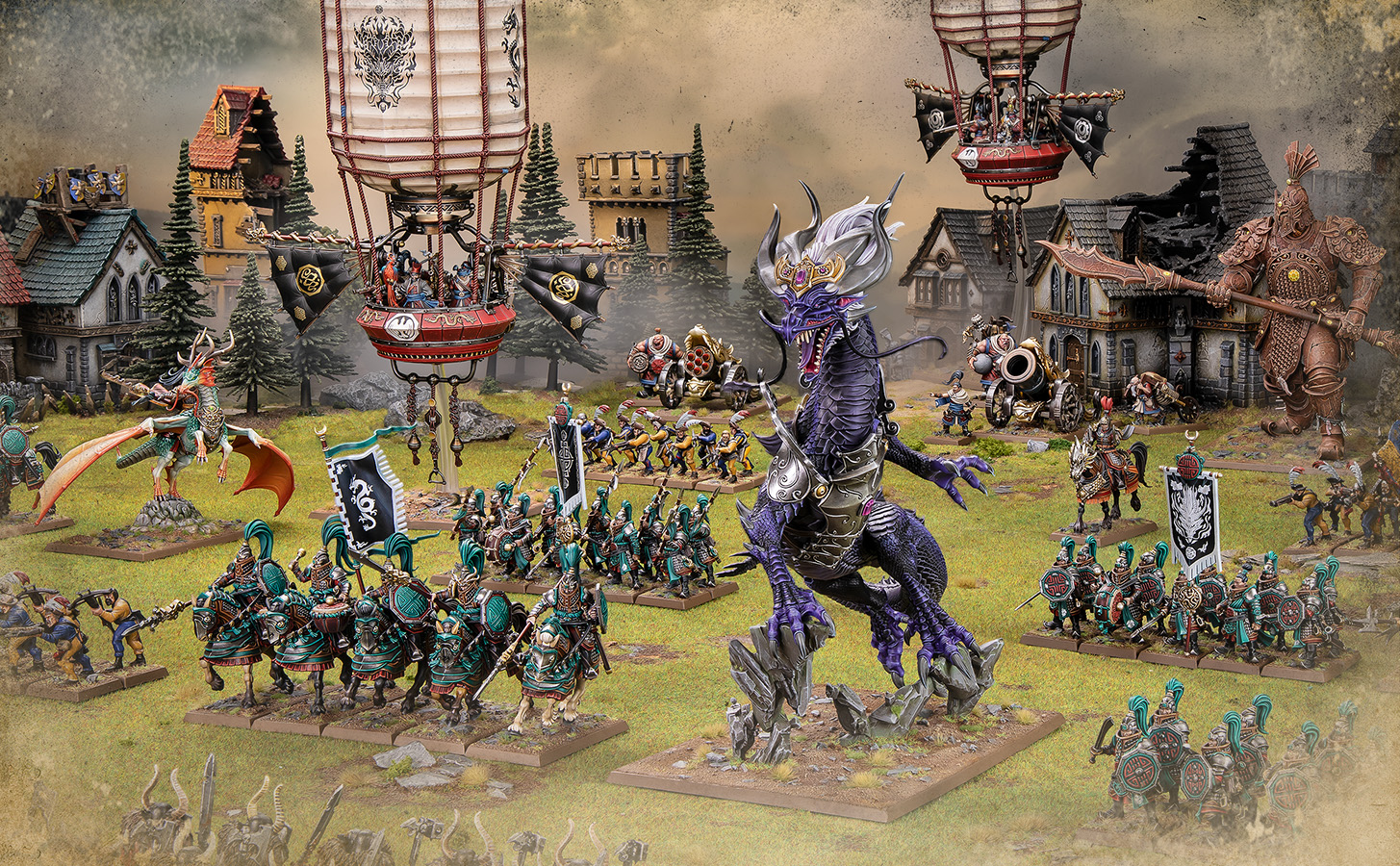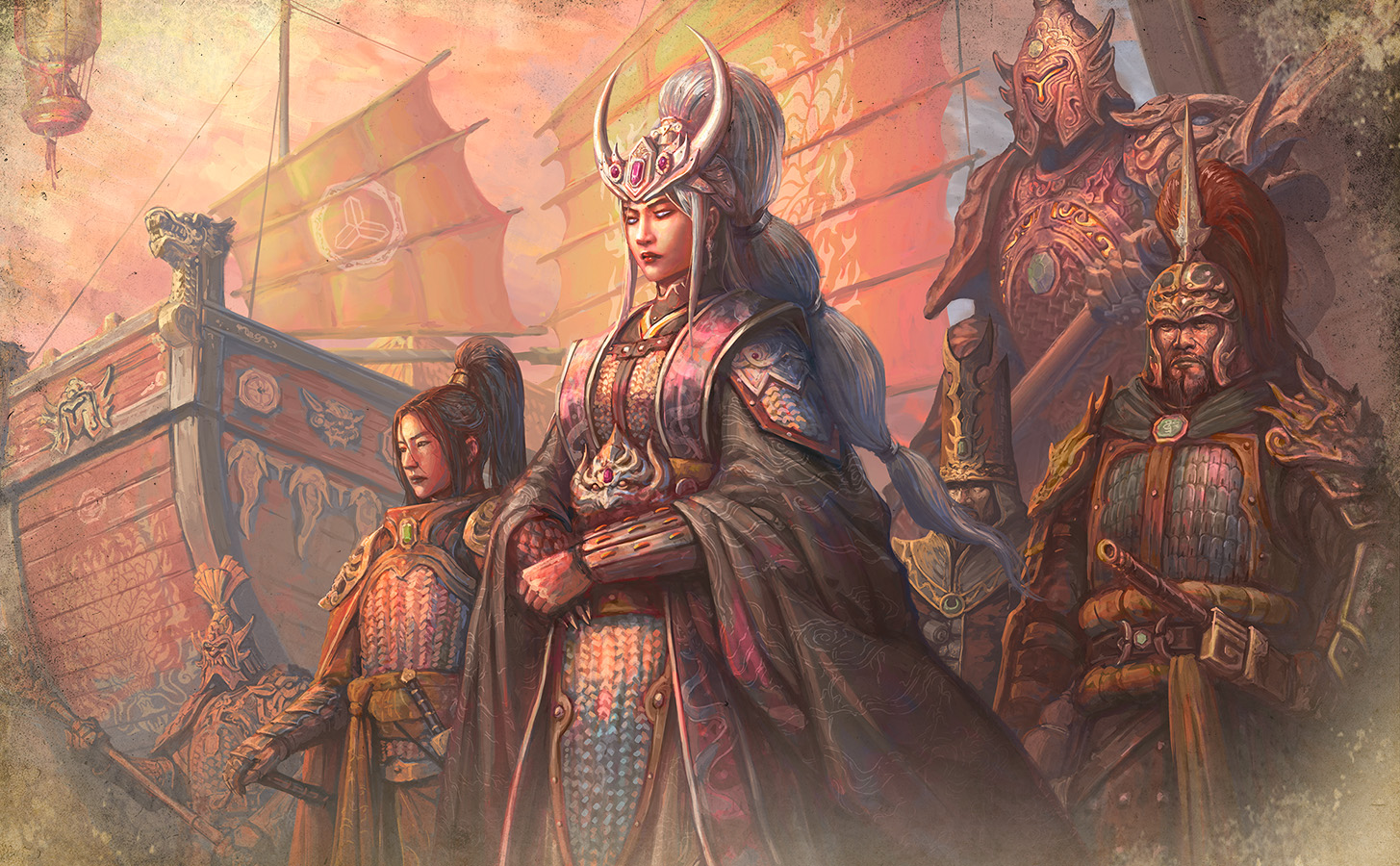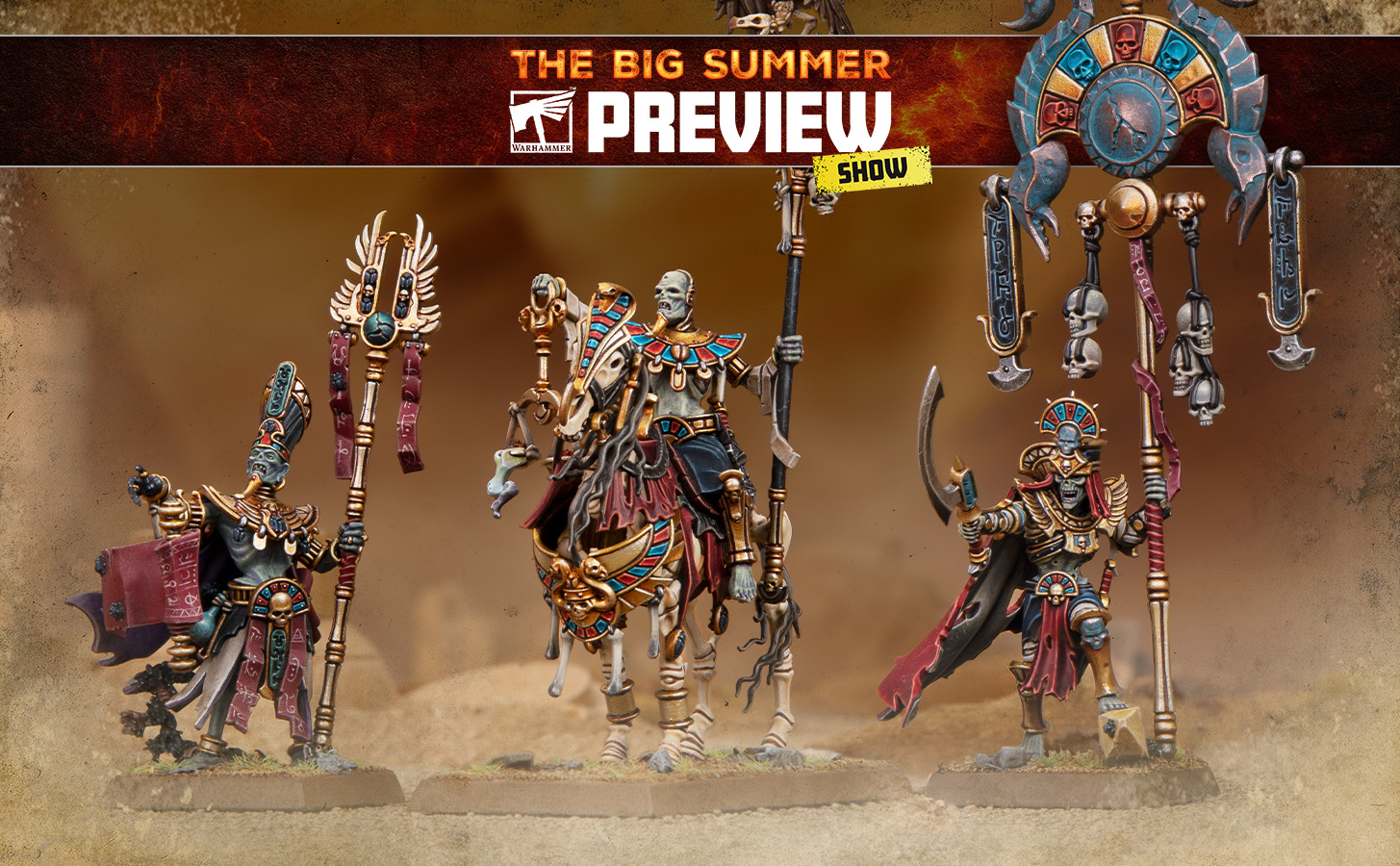Believe it or not, Grand Cathay has been present in the background of the Old World for almost as long as Warhammer Fantasy has been around. A great and mysterious Empire far to the east of the World’s Edge mountains, there have been references to Grand Cathay in the margins of rulebooks, bestiaries, roleplaying games, and army books. From an ill-started treasure fleet to a scheming diplomat in league to Chi’an Chi, through hushed references to an Immortal Dragon Emperor and more, we’ve only witnessed Grand Cathay in scattered glimpses.
That all changes soon, when the first Jade Warriors, Jade Lancers, and Grand Cannons disembark in Marienburg from war junks dispatched to aid the Empire in its growing struggle against Chaos.

To celebrate the upcoming arrival, we sounded the war gongs and gathered the original team who worked on Grand Cathay for a wide-ranging interview on how the faction took shape. Over the next few weeks, Old World Almanack will be touching on everything from sculpting to gameplay – but we’re starting at the very beginning, in 2018, when a video game studio approached Warhammer...
Owen (Background Developer and Archivist of Obscure References): It all started in 2018, when Creative Assembly [the video game studio behind the epic Total War: Warhammer trilogy] approached Games Workshop because they wanted to add more factions to the third title in the Total War series. They asked about Kislev first – which already had a fair amount of units described, and even designed – but a few of us got together and had fun concepting some new units.
They came back to us in 2019 and asked if they could tackle Grand Cathay. With something so embedded in the background of the Old World, and yet so mysterious, we told them we’d need to design the whole thing ourselves to ensure it was accurate to the setting.


Mark (Concept Artist and Warhammer Institution): We actually started before we knew that Warhammer: The Old World was coming back as a game – but we treated the whole project as you would any other new army, starting the work almost from scratch!
JTY (Lead Writer and Sardonic FAQ Answerer): It was a small team to begin with. Mark started doing the concepts, while Owen was put onto the background at the same time – long before anyone was thinking about rules. The first job was to search through all the Warhammer material for references to Cathay, everything that had been written going back to the second edition of Warhammer Fantasy Battles. There have been scattered references to Grand Cathay throughout the history of the game, but there has been a rich crop of references across the various editions of Warhammer Fantasy Roleplay over the years.
Some of these older ideas have been left in the past, but there are plenty of nuggets we reused that Owen first dug out. To give a sense of how well buried some such nuggets are, he famously exclaimed out loud in the studio one day “which idiot wrote this?” – before he noticed the byline and realised it was him…
Owen: I’m quite proud of the fact that there’s absolutely nothing in Grand Cathay that contradicts anything that came before. We’ve managed to work in all the timeline entries and titbits from, for example, the Lizardmen books, the Ogre Kingdoms books, even all the way back to that second edition. And there were more than a few apparent contradictions – where the Dragon Emperor has been given different names because scholars don’t have full information, or because travellers arriving at the edge of the Warpstone Desert have met a functionary and assumed they were the Emperor.
In the Lizardmen book from fifth edition, there’s a story about a sailor from a Cathayan city and an ill-fated treasure fleet that comes to Lustria (which, like a lot of Grand Cathay, is based a little in real history). Everything from his city of origin to the tattoo on his back and the things he talks about has all been worked into the background. Of course, much of this remains unpublished – we prepared a lot of material for our own background, only part of which is being used for the Old World project.
JTY: Before this project began in 2019, there had been a lot of useful references, but it wasn’t consistent and it wasn’t kept in one place. There is now, but there wasn’t a big folder marked Grand Cathay…
Owen: The most extensive thing written about Grand Cathay was in Tamurkhan: The Throne of Chaos from 2011. That’s where we get Onyx Crowmen, Shugengan Wizards, and the Warpstone Desert – all of which will be familiar to fans of Total War.

Rob (Old World Brand Manager and Guardian of the Assets): It wasn’t just that we wanted to make Grand Cathay for the video game – we did know that it would all need to be designed for miniatures, because that’s what Warhammer really is. Creative Assembly wanted as much as they could get, but they didn’t need to think about how it looked on the tabletop. We made sure that we did.
Mark: Some of our initial concepts were limited by the realities of wireframes. They can’t show long flowing robes, for instance, as that is a lot more expensive to animate – but we wanted those aspects for our models. We worked with them, but we knew that we’d be able to make miniatures that would be definitive.
Luke (Concept Artist and Gnomic Presence): Anything that went below the knees was forbidden!
JTY: We certainly want to be respectful of what’s in the game – we made it all for them to use after all – but we are now making miniatures based on the original work we did. We’re not going to reinvent it, but we can certainly do it exactly how we want it in plastic.
Owen: Grand Cathay is inspired by Chinese mythology. Just as the Empire and Bretonnia have real-world influences from the Holy Roman Empire and medieval France and Arthurian legends respectively, Grand Cathay takes inspiration from several of the great and most celebrated Chinese Dynasties, but we’ve made it our own. Everything has to tie into Warhammer.

Rob: Importantly, this is a Warhammer take on China. Warhammer is a lot of things, but there are simple tropes that unite it: it’s skulls, it’s death, it’s grimness. But for cultural reasons, many of these signifiers don’t align with a Chinese influence design language, so we had to think about which other levers we could pull to make sure it was Warhammer.
Owen: Both Creative Assembly and a Chinese sensitivity team were very helpful, providing guidance documents to ensure we understood China and didn’t make the wrong move. There are various symbols to avoid, and referencing skulls or gruesome body horror as part of the Grand Cathay visual language were ones we were keen to avoid.
Mark: There are certain styles of clothing and hair which signify darker periods in Chinese history. We had to be respectful of those, alongside these other considerations.
Owen: There are dynasties which are truly celebrated in China, we made sure to utilise some of the aesthetics from the eras that they spanned. There’s a great deal of difference between Chinese, Japanese and Korean aesthetics which Westerners can often get wrong.
Luke: We made sure to avoid an ill-informed Western perspective on the design criteria, which is very easy to do by accident.
Holly (Concept Artist and Grandmaster Semiotician): You may notice similar approaches in some Japanese media to Western medieval aesthetics, which can also come off as inauthentic. This kind of media isn’t bad – it can be a cool way of pushing into new areas of creativity – but it’s definitely not historically accurate!
JTY: China is very proud of its heritage, and we were happy to oblige.
Owen: I think the Longma is a great example of what we’re trying to do. We originally wanted to make qilin, a sort of Chinese unicorn that flies without wings. They’re noble, authentically Chinese beasts, but without wings they don’t translate well as a miniature.

Mark: We were trying to find a version of a pegasus, for a centrepiece hero miniature or perhaps monstrous cavalry.
Owen: You can’t just put wings onto a qilin, so in the end we put in the work to create our own. Longma literally means ‘dragon-horse’. It still has plenty of Chinese-inspired elements, but it’s now entirely a beast of our setting.
JTY: A hovering horse looks great in a still image – but it doesn’t translate well to the tabletop. We always try to understand the cultures we use for inspiration – their weapons, their armour, their wars, the things that inspire us without being directly copied. Taking that as a grounding for Grand Cathay has allowed us to do it in such a way that’s appropriate and respectful.
Holly: You have to take design decisions because they look right – but when you are deeply into a project you can uncover a whole new layer of meaning in your work.
Owen: The mountain armour is another example. It’s a strange type of linked armour that may or may not actually have existed – it appears on sculptures and in pictures of mythical Chinese heroes, but no one has been able to replicate it correctly in the modern era. It seemed absolutely appropriate for our heroes and the Terracotta Sentinels – it’s China’s own version of fantasy armour, and it has all the connotations we wanted.
Mark: We began our research with military history books. China has a very long history, and their arms and armour changed over the course of thousands of years – but there are certain classic looks associated with popular dynasties, such as the Tang dynasty, which is one of the main influences for the Jade Warriors.
We took a lot of time to research the differences between Chinese, Japanese, and Korean styles – you’ve got to look at these things to learn what not to draw as much as what to draw. We then had to be really clear on how ancient Chinese armour actually works, so we could remake it as something suitably fantastical.

Owen: You need to know the rules before you can break them. In those places – with the Longma as a prime example – you have to know what not to do. We knew how the historical suits of armour looked – but they needed that Warhammer spin.
Mark: You also have to keep in mind that we’re making a miniature. You have to know that the sculptor is still going to be able to show your designs when they’re reduced to a Warhammer miniature.
JTY: You also have to be able to make it in plastic. Some of the decisions we made that deviated from the historical template were taken due to the way you have to lay sprues out.
Mark: I’m very proud of the Sentinels. I imagine them coming alive with magical fire when they are awakened for war, with light pouring from their armour. I got the idea for those from an animatronic figure that scared the life out of me as a little kid!
I imagine them as standing inert all across the land, waiting to be activated in times of war. Some might be covered in vines with offerings at their feet, but others are just… part of the landscape.

Owen: Rules-wise, even though we'd already begun work on Warhammer: the Old World by the point it was needed, we did a lot of work on them using the rules from the eighth edition of Warhammer Fantasy Battles – including a full set of unit profiles. This was to give Creative Assembly the context they needed to fit Grand Cathay into Total War, which is based on that edition of the game.
It was in part to mechanically contextualise a new faction. The entire Total War series is based on that edition of the game – so if a Cathayan unit had a movement of 6”, Creative Assembly could understand how fast it moved relative to everyone else.
And with that we end our first foray into the armies of Grand Cathay. Old World Almanack will return later in the week to examine a little of the in-world lore of the Kingdom of the Dragons.





